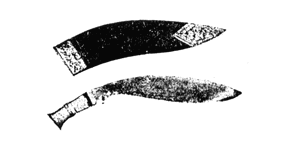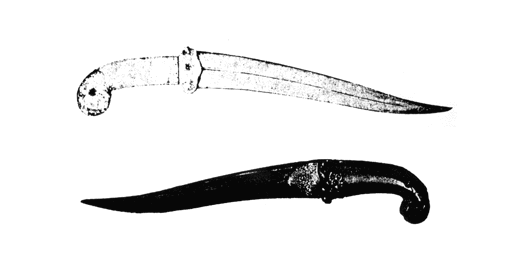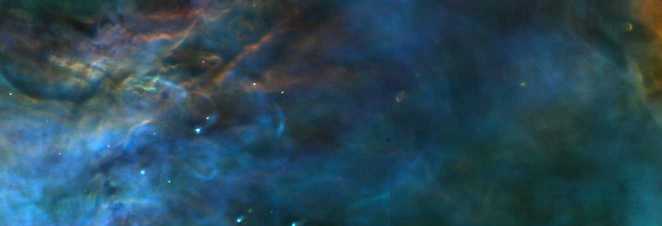- The Void lies off the eastern edge of the world. The Void is a cold, dark, seemingly
limitless space, or rather, an emptiness. Essenor perches on the edge of a cliff down
which the river Glissern flows, never to touch bottom. Essenor's existence depends on its
trade with the void star, Brin, which often reflects some light during daytime. Brin is a
floating rock where dwell those strange creatures known as Azaz'Rînolonin.
- The inland sea, the Say of Sartor, was formed in earlier years by Sartor the first
sorcerer who commanded water elementals from half the continent to gather in one place.
His motives for doing this remain unclear. That being said, many of Sartor's deeds were
without apparent motive. Legends say he disappeared after a ferocious battle with a
stranger from the far west.

Eastern Majai
top
The Laws of Essenor
as posted or read aloud at festival
- Weapons
All weapons toted, worn, drawn or slung upon your person are illegal, unless you wear the sash of one of the authorized Guard Gangs.
Violators face, at best, surrendering your weapons and, at worse, imprisonment.
Weapons packed away or kept at home are allowed. Just keep them out of sight.
- Ajinabi Worship
None shall worship any of the false "gods."
This means: no temples, no congregations, no priests and no servants of the Ajinabi are allowed in our peerless city.
Any violators face the wrath of the Shifters.
- Use of Magic
None shall use teng'ariza in Essenor, unless authorized to by the Icaril.
- Selling Goods
Goods, aside from prepared food-stuffs, may only be sold in the bazaar in the Foreign Quarter.
Licenses may be obtained from the Icaril.
- Gambling
Any game of chance played for any amount of money is illegal unless practiced under the supervision of a representative of the Nineteen.
Penalties for violating this edict include fines and/or imprisonment.
- First Grug Law
Grugs must obey the orders of any Essiln, unless they are acting under higher orders.
Any such disobedient grug may be disposed of in any way the complainant sees fit.
- Second Grug Law
Grugs may not leave the boundaries of Essenor, under pain of death. Any Essiln or visitor who aids such an escape faces exile.
- Highest Law
The word of a Shifter brings final judgment, whether for life or death.
top

Fernith
A four-legged herd beast that weighs in at seven to eight hundred pounds and measures
about five feet high at the shoulder.
Its flesh — the texture and coarseness of pebbles — is hardly covered by sparse
yet coarse hair. Its body is barrel shaped, with long legs and neck. Its belly is
protected by a series of interlocking chitinous plates that reach from breastbone to
hindquarters.A stubby, hairless tail projects from the base of the spine.
Its eyes protrude from either side of its long, narrow head and allow for vision in all
areas save for immediately behind. The long nose terminates in a sharp, hooked beak and
the mouth houses several functional fangs in addition to the grinding blunt teeth of a
grass eater. Along the top edge of the nose is a knobbed bony ridge.
They are omnivorous, though they prefer meat and will graze only when there is no prey or
carrion available. They prefer to knock prey senseless with their bony heads in a single
rushing attack, but if pressed to it will employ beak and hooves in defense.
Southern plains fenrith range in color from brown to green, and often are found in motley
combinations of these. A slightly smaller but more powerful breed of the beasts populate
the ashen fringes of the volcanic plains and range from dirty white to deep grey.
Weameer
A flying critter more reptile than bird with a leathery neck and body, but feathers on its
wings and the top of its head.
Seaside and riverside scavenger that will go up to 20 miles inland in search of a meal.
Kyre-falcon
Giant raptor of the Southern Plains
They have all of the characteristics of their smaller cousins, along with about ten times
the wingspan and a corresponding appetite. They're strong enough to pick up full grown
chariel on the fly and bear them back to their nesting places in the mountains that border
the plains on the south.
Their feathers and organs are prized by hunters from all factions of the plains, and their
surprising ability to avoid or even kill large parties of would-be trophy takers has led
to speculation that they're much more intelligent than their smaller counterparts.
Jinwe
Pollinating insect native only to Essenor
This nocturnal, winged insect measures about the size of the smallest joint on your smallest finger. Its backside glows with a dull, pale white light. Utterly harmless, it enjoys a diet of sap, juice and nectar from the various tower-gardens around Essenor.
The good news for night travellers is that the jinwe fly in swarms, and the cost of a jinwe-stick is cheaper than a torch. The jinwe-stick, coated with tasty sap, provides portable illumination without heat.
Rake
top

- Most weapons and metallic armors are made from bronze (a heavy reddish-brown
alloy of copper and tin.)
- No gold exists on Majai. The most valuable metals (in descending order of value)
are:
- Iron
Iron weapons are seldom seen, since iron itself is very rare and very few are able to
craft weapons and armor with it. Such Blacksmiths usually are Flame Sorcerers or
work in close association with one. Blacksmiths never part with their secrets; some say
they are under a mystical prohibition against such action.
- Silver
In Majai, silver never tarnishes; thus it is the most esteemed precious metal. Most silver
is not reduced to base coinage; it tends to get used for more aesthetic purposes.
- Adamas
A lightweight yet strong material used for building. It is not commonly used for weapons
since it can be cast but not hammered, as it is brittle. Despite these disadvantages, it
is sought after for the sheer height of buildings which can be built with it. No city
possesses more adamas towers than Essenor.
top
Coins
Most coins have holes in the center to facilitate carrying them on a thong or string.
Coins typically seen in Majai (in ascending value):
- Tin
Flats change hands the most; the staple of the lower and middle classes' day-to-day
expenses. They can easily be broken into quarters, or bits.
1 flat = 4 bits
- Copper (actually bronze)
Creeds are the most regulated coinage, minted by most cities, whether Free or Godly. Currency can be converted based on weight, but such coins as there give away your city of origin and possibly your beliefs (thus "creed").
1 creed = 20 flats
- Silver
Fists: the coinage of nobles and rich merchants. Most peasants live and die without ever
holding one.
1 fist = 20 creeds
- Iron
Bars of iron are the most compact form of wealth, usually held in a king's
vault. Even then, there are better uses for iron than currency.
1 bar = 200 fists
top

from a Monastos class taught by the Utor-Ka weaponmaster Mwewe
Mwewe gestures to his legendary iron blade Yeyeuma. Even sheathed, the three foot long, inch and a half wide, double-edged blade radiates menace — perhaps it's the cruel ridges of metal whorled about the oddly-shaped hilt. Mwewe speaks, "Iron. It makes the best of weapons. Lighter and stronger than bronze, it allows for larger weapons and nearly impervious armor.
"So why so rare? Can iron not be heated and shaped just as bronze can? It is not so easy. The heat required is much greater.
"Yes, teng'mariza. They can call on their burning tenga and melt any metal. But, if they have not the lore of the Blacksmiths, then the iron turns on them. And slays them.
"There are said to be other, darker ways to forge iron, besides the lore of the Blacksmiths. This awful path involves the deaths of innocents. But such infamy stains the metal and the man.
"The Lohaar, as the Blacksmiths name themselves, go sight unseen and make weapons infrequently for reasons they keep a secret. So it falls to ordinary folk to make their own weapons, of bronze and wood. Of this weaponcraft, I will speak.

"The kopis comes from the Dytikos. The forward curve of the blade make this hacking weapon a choice for even those not familiar with war. Also, it make an excellent close-in weapon. Thrusting with it is possible but difficult to aim properly.

Kukri

"The crescent sword is truly a mercenary's weapon. It takes far too much space to fight in close formation, and is both heavy and two-handed. The wooden center-staff needs to be changed every few seasons. It allows for both easy parries and attacks from surprising quarters against the unwary. Both the weapon and many of the attack forms still extant were invented by Rumidlo, a Ghjanoor Utor-Ka serving in Twiln about two hundred fifty years ago.

"The jambiya is a classic Amari weapon: small, cheap and rather obsolete. Better than going unarmed, though, I suppose." At this point, it's quite noticable that, beneath his gray silks, Mwewe possesses the black eyes and reddish-brown skin of an Amari.

Khanjar

Exotic Throwing Knife
top


A clear view of the night sky
The Majai year is divided into five seasons:
- Gray Season
A good approximation of Earth's winter.
Temperatures drop; the pale sun shines even duller as the skies grow ash-gray.
Among the superstitious, a time for ghosts and ill omens.
Also known as the God-Time, since the gods seem most powerful at this point of the
year.
- Burning Season
A glad relief from cold days.
The steam wells and heat lairs are active enough to warm the world.
All the elements of fire and steam are restless; many unintentional fires happen.
- Soil Season
A time for planting and growing. Plants re-awaken.
- Storm Season
The rains come, but sometimes with force.
Seas, river and ocean rock with violence.
- Harvest Season
Grain is gathered; festivals are held.
Folk tales say that more are born in Harvest Season than any other time.
Also, stories say more wars happen now than any other time of the year, dubbing this
— the Grim Harvest.
top

(herbs, drugs, cures and alcohols)
Not food flavorings.
In Majai, especially Essenor, the euphemism for "drug" is "spice."
Selling a particular spice may not be illegal, but neglecting to pay tax on it certainly
is.
In effect, spice means any substance derived from indigenous plant life.
Especially that which humans use to alter their physical or mental states.
Nottle ("Khe Juice")
An ale created from a type of fermented honey.
The honey comes from a tiny wingless insect that looks very much like a Khe in miniature.
Pleasantly sweet, refreshing, with a high alcohol content, it is cheap to make.
Thus it's really popular with those of the lower classes.
Shishac
A hallucinogen.
Charse
That alien powder that the Dreaming Lords monopolize and burn as incense.
top
Fire-making
The rarity of iron [more precisely: high-carbon steel] means that starting a fire can be a long and miserable experience, brought about only by waiting for lightning (or a storm tenga) or rubbing two sticks together.
Most folks solve this problem with either banked coals or slow matches:
- Banked coals are the glowing embers in the center of a dying fire, preserved by hanging them in a censer to let the air keep them afire.
-
A slow match is a length of rope or cord that hangs smouldering to give fire when wanted. It is used as a means of preserving fire and also as a mean of carrying it from place to place. The cord can range from 1/4" to 1/2" in diameter, and must be made from suitable soft, inner bark or palm fibre. When one end is put in fire or against a glowing coal it will take hold of the spark, smouldering slowly.
top
Games
Timendi
A dice and stones gambling game common among the Amari.
Xalsis
The essential Essil card game (gambling or otherwise), Xalsis is played with 3 or 5 players. Alliances shift during the game, as two-person team(s) vie with the singleton player, or Uchache. The deck has five suits.
top
|

![]() Geography
Geography![]() Laws
Laws![]() Fauna
Fauna![]() Metals
Metals![]() Coinage
Coinage![]() Arms
Arms![]() Seasons
Seasons![]() Spices
Spices![]() Fire-making
Fire-making![]() Games
Games






